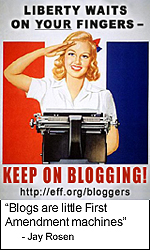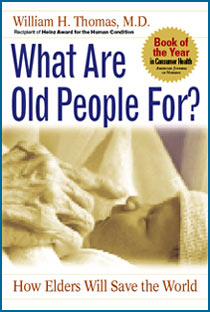![]()
Search
Recent Posts
- ChangingAging.org Redesign -- Please Bookmark!
- Disaster in Buffalo
- Power Up Friday
- Blanchard WinsDays
- Kevin Frick writes...
- Monkhouse Monday
- Getting Closer!
- Blanchard WinsDays
- Power Up Friday
- My Pick for Health and Human Services
- Understanding Health Care Reform
- Facts Are Stubborn Things: Social Security Edition
- Monkhouse Monday
- Localism is Coming
- Krugman Can't Wait...
Recent Comments
Category Archives
- AGING 100
- Aging
- Culture
- Dementia
- Eden Alternative
- Erickson School
- Green House
- Health Policy
- Longevity
- Media
- Rockets
Monthly Archives
- February 2009
- January 2009
- December 2008
- November 2008
- October 2008
- September 2008
- August 2008
- July 2008
- June 2008
- May 2008
- April 2008
- March 2008
- February 2008
- January 2008
- December 2007
- November 2007
- October 2007
- September 2007
- August 2007
 Subscribe to this blog's feed
Subscribe to this blog's feed
Announcements

Blog Data
« Sock Puppet Theater... | Main | 12 People Who Are Changing Aging No. 3 »
February 19, 2008 |Permalink |Comments (0)
12 People Who Are Changing Aging No. 2
[Editors note -- this is a continuation of 12-part feature by The Wall Street Journal profiling "pioneers who are shaping the way Americans will live, work and play in later life."]
Number 2 -- Harnessing Technology
In the mid-1990s, before joining MIT, Prof. Joseph Coughlin was working for a federal contractor, studying the aging population's potential impact on transportation."It was like unwrapping an onion," he remembers. "We hadn't thought about housing, [or] the future of work. And we certainly hadn't thought about transportation."
That epiphany led to the creation, in 2000, of AgeLab, where Prof. Coughlin and his colleagues are designing -- and pushing companies to embrace -- technology that will enhance older adults' daily lives.
One of his favorite breakthroughs is a "personal adviser" that Procter & Gamble Co. has licensed, based on AgeLab research, to help food shoppers identify products that are healthy for them. The device, to be attached by supermarkets to their grocery carts, is like a minicomputer with a scanner. Shoppers insert smart cards that contain their dietary particulars. Then, as they shop, they swipe products past the scanner to get the device's opinion. Let's say you're prehypertensive and scan a box of crackers; after reading the bar code, Prof. Coughlin says, the adviser may suggest trying a different product with a lot less salt.
Tomorrow -- Helping People Stay Home.














